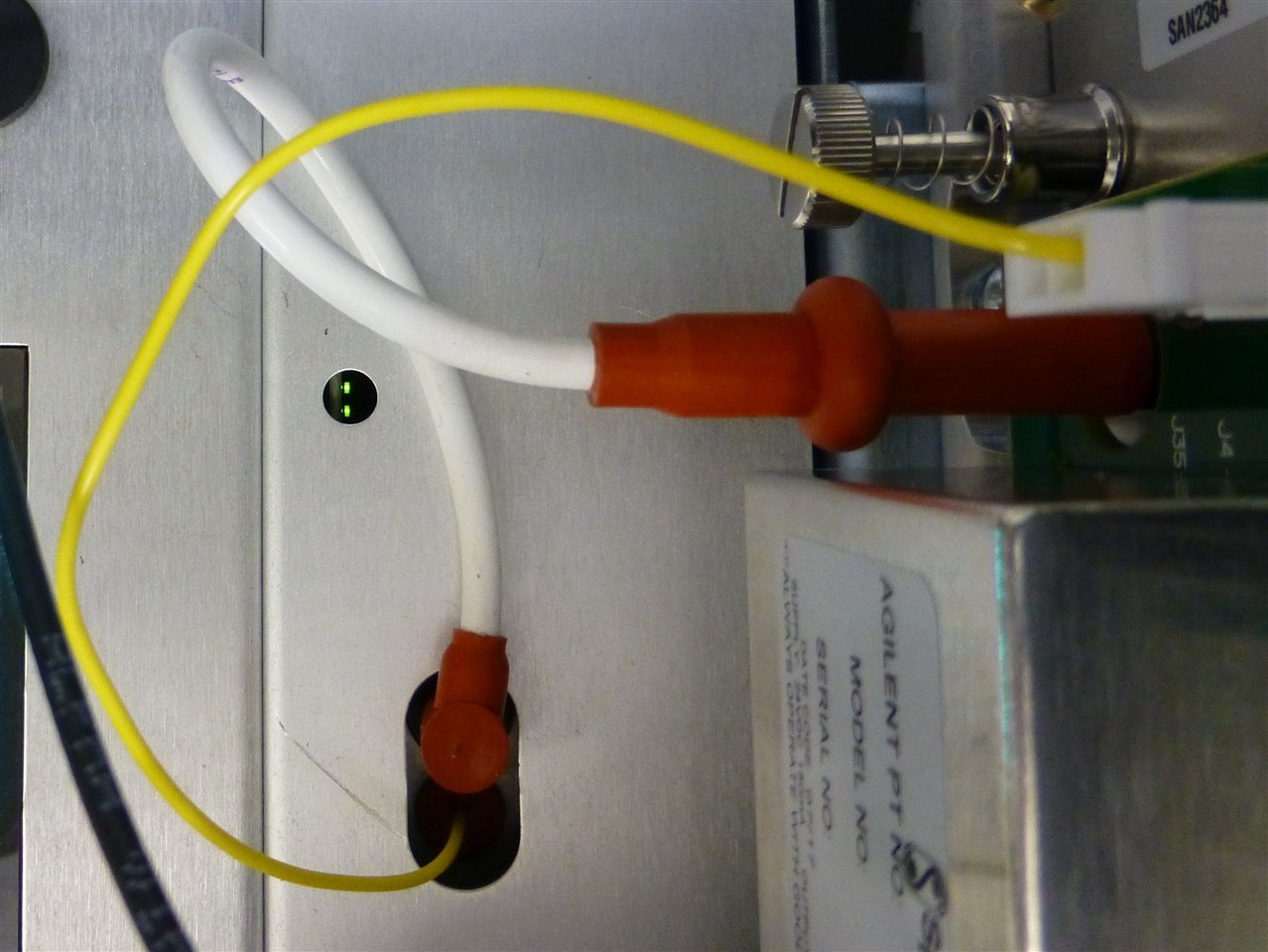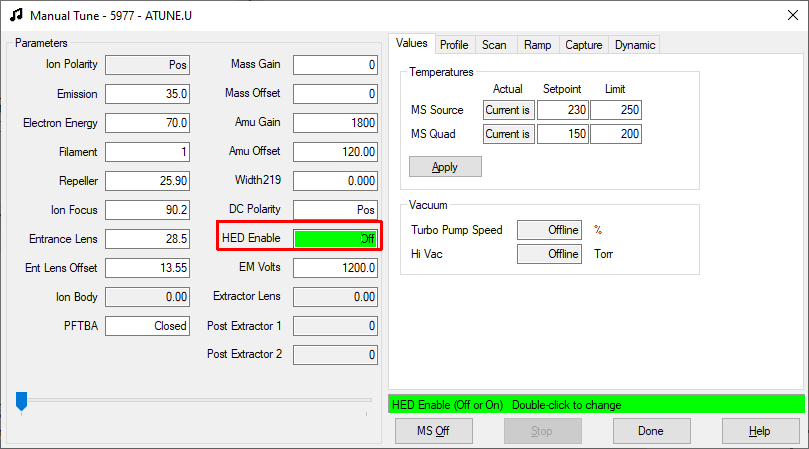Hello everyone,
I have a MSD 5975 that exhibits the error "Difficulty with the HED supply" only when attempting auto-tune. I realigned the wires around the quad and did not help. The HED itself does not seem to be dirty. Is there a way to find if the HED power supply is working correctly without disassembling the whole unit? It uses a turbo pump and the pump oil level is OK, so, according to the troubleshooting guide, it must be something on the detector or the electronics. Any help would be appreciated.


